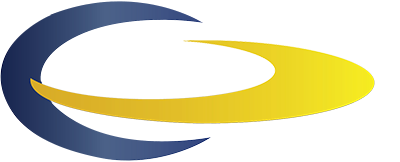A PCB or printed circuit board is commonly found in most modern electronic gadgets and devices. Despite the ubiquity of PCB, however, people often fail to correctly understand the basic technological principles behind its design.
This can lead to inefficient use and faulty electronic circuit designs. In order to gain a better understanding of how electronic devices work and how to make the right choices for maximum efficiency, you must learn the basics of PCB components, construction, and design.
An Overview of the PCB Board
In its most basic form, a printed circuit board or PCB is essentially a plastic board that has been reinforced with glass. This board comprises of some copper pads and lines, which are cut from a copper layer and connected together on the surface of the board.
Often known as traces, these copper lines facilitate the flow of electrical charge through the PCB. This electrical charge flowing through the board helps provide power to the various components systematically situated on different parts of the PCB board. The copper lines serve as a replacement for the wires, helping guide the electricity to the intended destination.
Selecting the Right PCB Components
Selecting the right PCB components is one of the most important steps needed for efficient electronic circuit designing. With rapid advancements in technology and a plethora of options, however, choosing the best components can often be a major challenge for engineers designing PCB boards.
There are no hard and fast rules for how to choose PCB components, as a result of which the process of selection can be quite complex and difficult to execute with perfection.
In order to choose the right PCB components, engineers must have an extensive knowledge and experience in the domain of PCB electronics and know everything there is to know about the different types of PCB boards.
They must also have extensive knowledge about the functions, fundamentals, and specifications of the different PCB components. Only then will they know how to choose PCB components for maximum efficiency and longevity.
Once the overall design of the electronic circuit is ready, the engineers designing the PCB must have a clear and accurate idea about which components will be required. The component engineering and design engineering teams need to collaborate effectively with one another in order to select the highest quality PCB components at the most affordable rates.
Thus the PCB design must be cost-effective but without compromising on the quality of the components and materials used.
The Key Factors to Consider When Choosing PCB Components
Performance and Design Requirements
PCB components must be selected keeping in mind the design and performance requirements of the individual circuit. The components play an essential role in enabling the PCB board to perform its intended function.
Therefore, the person selecting the components must understand the exact functions of the PCB board that is being designed. Once the engineer understands the intricacies and functionalities of the particular design, they can choose the right PCB components to bring that design into fruition.
Technological Innovations and Advancements
The latest advancements in web-based technology have made the task of component selection much easier. Smart digital tools for electronic component selection can be used by modern engineers to choose the perfect components for each PCB design.
These web-based tools allow engineers to save time and money when selecting the PCB components. They can just check the online inventories of component manufacturers and select the components that they need for a particular design.
Market Rates and Value Analysis
An experienced engineer, who has a thorough understanding of PCB electronics will be able to accurately gauge the effectiveness of a specific PCB component vis-a-vis its market value.
The engineer must also compare the price of a component to that of local products that are similar in design, or different versions of the same component. This will allow the engineer to choose the component that provides the best value for money and cost efficiency, allowing the business to gain a competitive edge over other companies operating in the field.
Durability and Longevity
One of the most important factors that must be taken into account when selecting PCB components is the quality and longevity of the product. High-quality and durable components are always more beneficial and cost-effective in the long run, even when they are slightly more expensive at the time of purchase.
A PCB board made from high-quality components will be more durable and require fewer repairs over the course of its life.
For instance, using circuit breakers instead of fuses and software control instead of manual switches can dramatically increase the longevity of a circuit. Furthermore, high-quality and properly sized dissipative devices such as resistors, inductors, and semiconductors ensure that the internal temperature of the circuit board always stays within reasonable limits.
In Conclusion
These are just some of the factors involved in learning how to choose PCB components for maximum efficiency and cost-effectiveness. Choosing the right PCB components ensures that the final product is affordable, durable, and highly effective. The right components can also enhance the usability and overall performance of the PCB board.

